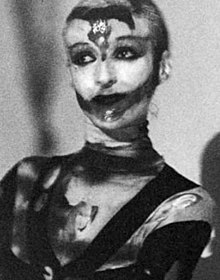
Jesús Rafael Soto was a Venezuelan op and kinetic artist, a sculptor and a painter.

Carlos Raúl Villanueva Astoul was a Venezuelan modernist architect. Raised in Europe, Villanueva went for the first time to Venezuela when he was 28 years old. He was involved in the development and modernization of Caracas, Maracay and other cities across the country. Among his works are El Silencio Redevelopment which included 7797 apartments and 207 shop premises and the Ciudad Universitaria, the main campus of the Central University of Venezuela. The Campus was declared a World Heritage Site by UNESCO in the year 2000.
Venezuelan art has a long history. Initially dominated by religious motifs, art in Venezuela began emphasizing historical and heroic representations in the late 19th century, a move led by Martín Tovar y Tovar. Modernism took over in the 20th century. Notable Venezuelan artists include Arturo Michelena, Cristóbal Rojas, Armando Reverón, Manuel Cabré, the kinetic artists Jesús-Rafael Soto and Carlos Cruz-Diez, the Meta-realism artist Pajaro and Yucef Merhi.

The University City of Caracas, also known by the acronym CUC, is the main campus of the Central University of Venezuela (UCV), located in central Caracas, the capital of Venezuela. It was designed by the Venezuelan architect Carlos Raúl Villanueva and was declared a World Heritage Site by UNESCO in 2000. The Ciudad Universitaria de Caracas is considered a "masterpiece" of architecture and urban planning, and greatly influenced Venezuelan architecture.

Alejandro Otero was a Venezuelan painter of Geometric abstraction, a sculptor, a writer and a cultural promoter. He was a founding member of the Los Disidentes group.
Patricia van Dalen is a Miami-based visual artist with a career that spans over forty years, dedicated to abstract painting, ephemeral site-specific installations, and designing permanent works for public places and private architectural spaces.
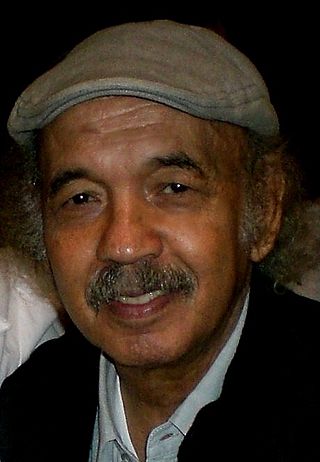
Jacobo Borges is a contemporary, neo-figurative Latin-American artist. His curiosity for exploring different mediums made him a painter, drawer, film director, stage designer and plastic artist. Known for his ever-evolving style, there is one constant principle that unites his work: "the search for the creation of space somewhere between dreams and reality where everything has happened, happens, and may happen." His theoretical approach and unique, innovative technique has won him acclaim all over the world. He has had solo exhibitions in France, Germany, Austria, Mexico, Colombia, Brazil, Britain and the United States. Today, he is considered one of the most accomplished artist of Latin America. His oeuvre includes a rich body of paintings, a film directed in 1969, and a book The Great Mountain and Its Era, published in 1979. In 1982, a biography by Dore Ashton, called Jacobo Borges, was published in English and Spanish.
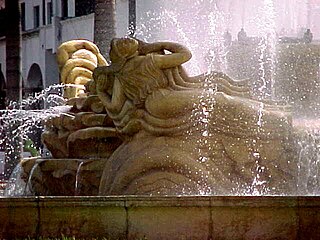
Francisco José Narváez was a Venezuelan sculptor and painter who is perhaps best known for "Las Toninas", a sculptural group that decorates the fountain of the Plaza O'Leary in Caracas. His work is characterized by a strong ethnic component and he made extensive use of local materials.
Geula Kohen Moradov commonly known as Geula Zylberman or Geula is a naturalized Venezuelan abstract impressionist artist that emigrated to Venezuela in 1940. She rose to national fame in 1969 as a part of the figurative movement that took root in Latin America, painting picturesque Venezuelan landscapes and renowned portraits of Simon Bolivar. The positive domestic critical acclaim catapulted her to international recognition between 1971 and 1989, earning international recognition for her paintings and murals with exhibitions in countries such as Israel, the United States, Canada, Belgium, Brazil, France, Romania, and Honduras. Most recently, true to her ancestral roots, Geula has shifted into painting Judaica themes with a strong Zionist flare and national Israeli sentiment. As a result, Geula's artwork has constantly been representative of either Venezuelan or Israeli identity. Her art has been exhibited in Venezuelan federal and government buildings, the Israeli Knesset, major museums, and private collections worldwide.
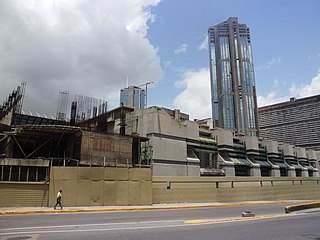
The National Art Gallery also known as Gallery of National Art is located in the Plaza Morelos area of Caracas, Venezuela. The museum opened in May 1976. In 2009 it moved to a new building designed by Carlos Gómez de Llerena, Venezuela's largest museum building.
Ofelia Márquez Huitzil is a Mexican artist and member of the Salón de la Plástica Mexicana. She is best known for her abstract art with figurative elements, which has made her work somewhat controversial and excluded from Mexico abstract art movement.

Muu Blanco, is a multidisciplinary Venezuelan artist. He works in the plastic arts, performance, drawing, photography, electronic music, conceptual video, and handbag design. His compositions have been presented locally as well as internationally, including in cities like: New York City, Berlin, Miami, Barcelona, Bogota, Buenos Aires, London, Vancouver and Milan. His work has been regarded as a criticism to power, wealth and narcissism, as well as commentary on the urban landscape of modern Caracas.

Mercedes Clementina Marta del Carmen Pardo Ponte, known as Mercedes Pardo was a Venezuelan abstract art painter.

The Aula Magna is an auditorium at the Central University of Venezuela. It is located within the University City of Caracas, next to the University's main library building. The hall was designed by the Venezuelan architect Carlos Raúl Villanueva in the 1940s and built by the Danish company Christiani & Nielsen from 1952–53. It was declared a UNESCO World Heritage Site in November 2000 for being artistically and architecturally significant. The most notable feature of the hall is its acoustic 'clouds', which serve both aesthetic and practical functions. They are an element of the hall's design which contributed to the science of interior space acoustics, though the building exterior is also architecturally significant.
Elba Damast was a Venezuelan artist.
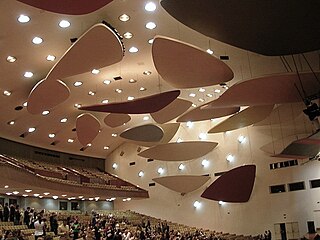
Floating Clouds is a work of art by American sculptor Alexander Calder, located in the Aula Magna of the University City of Caracas in Venezuela. The 1953 work comprises many 'cloud' panels that are renowned both artistically and acoustically. The piece is seen as "one of Calder's most truly monumental works" and the prime example of the urban-artistic theory of campus architect Carlos Raúl Villanueva.

Francisco Narváez was commissioned to create pieces for the University City of Caracas campus in 1949, initially working between 1950 and 1953, with other pieces added later. The artworks include stone and metal statues, busts, reliefs, and various material of murals. Three of the statues are made of Cumarebo stone: El Atleta, a large statue in the sports complex, and La educación and La ciencia in the medical complex. The Cumarebo stone is a favourite material of Narváez. Two sculptures of the esteemed doctor José Gregorio Hernández and President José María Vargas grace the campus grounds.

Diana López is a Venezuelan visual artist and cultural manager. She developed her artistic style in the nineties, focusing on participation and exchange with other people in the production of her pieces. In 1994, she became the first woman to receive the Eugenio Mendoza Prize. Her work ranges from photography and video to performance and installations. López was director of culture for the Chacao municipality for seven years. While there, she promoted the creation of the Chacao Theater and the library of Los Palos Grandes in Caracas. She is the director of the Urban Photography Archive in Caracas.

Venezuelan artist Mateo Manaure was commissioned to create pieces for the University City of Caracas.
